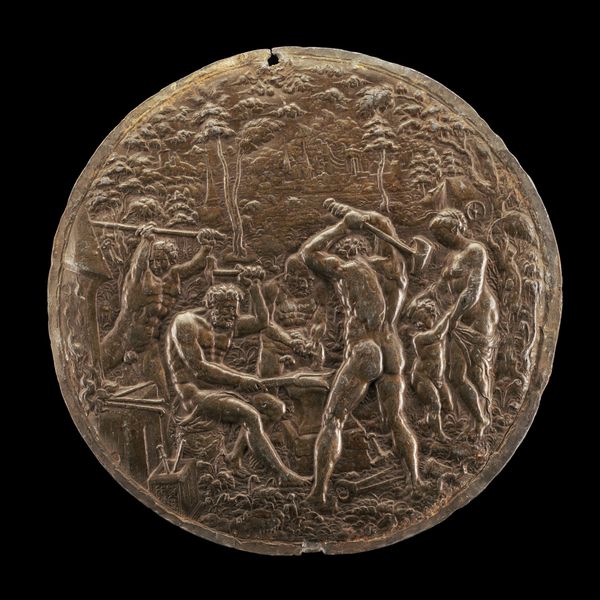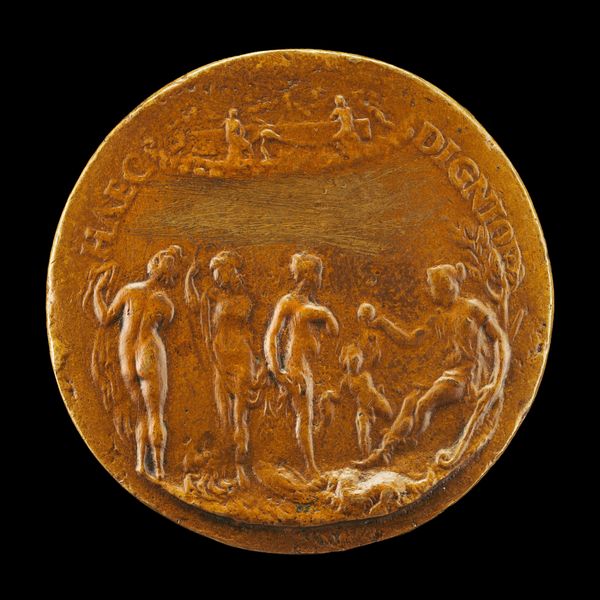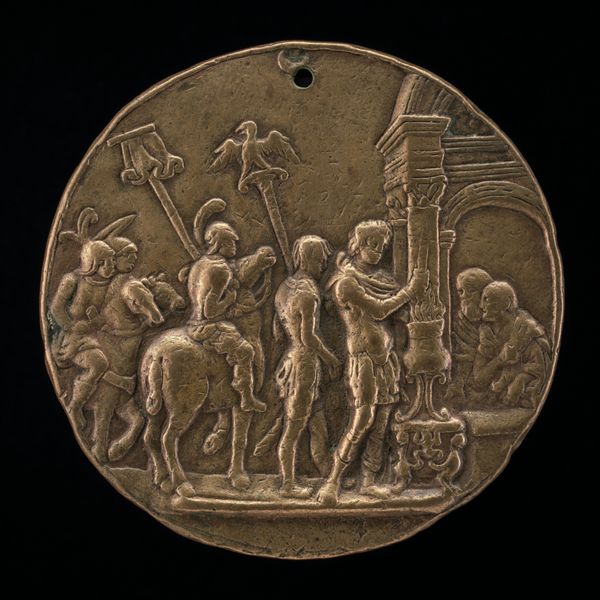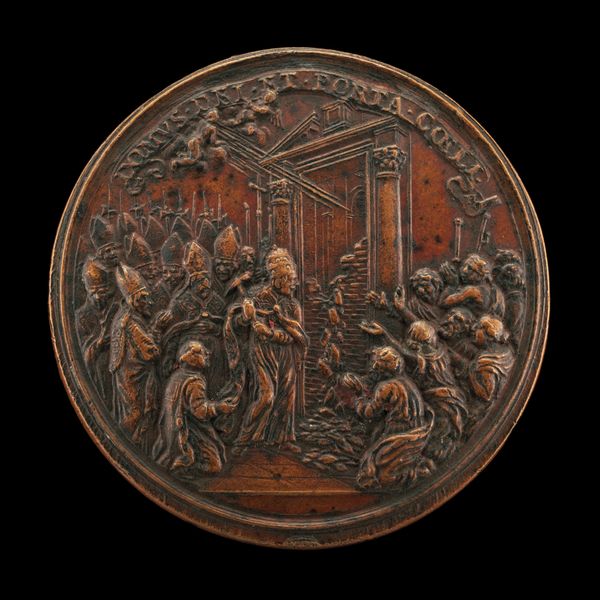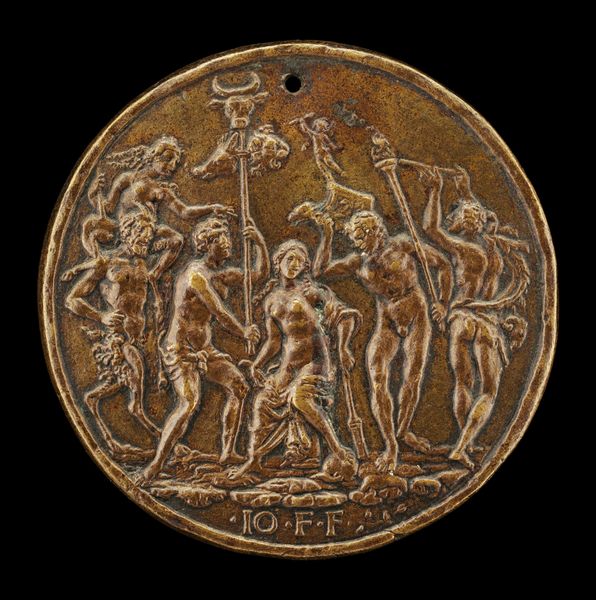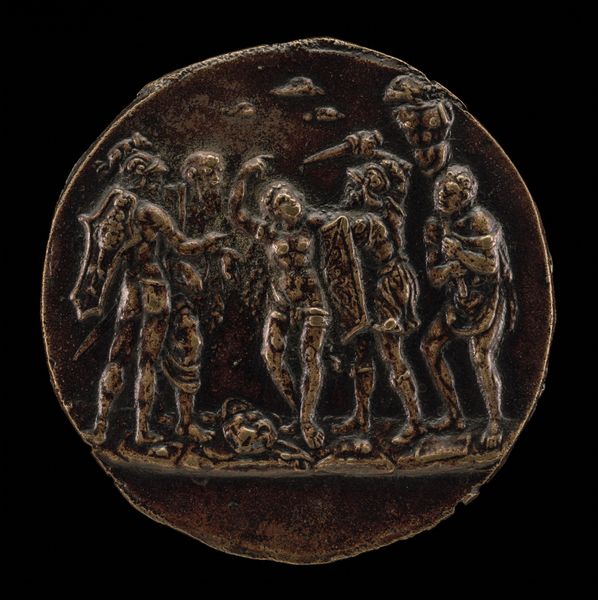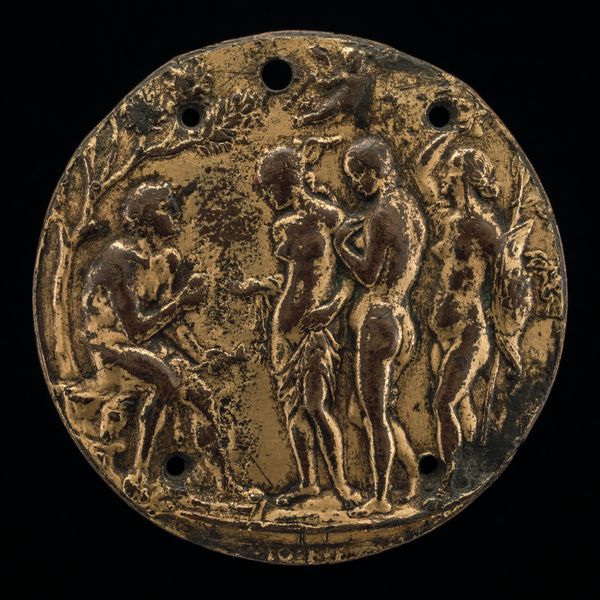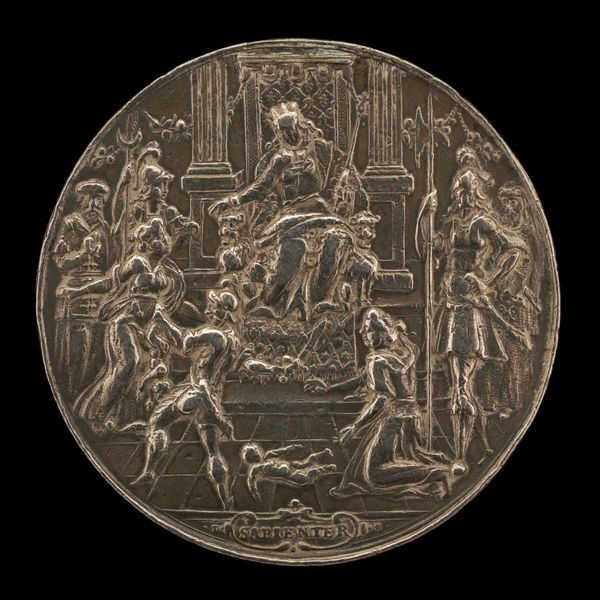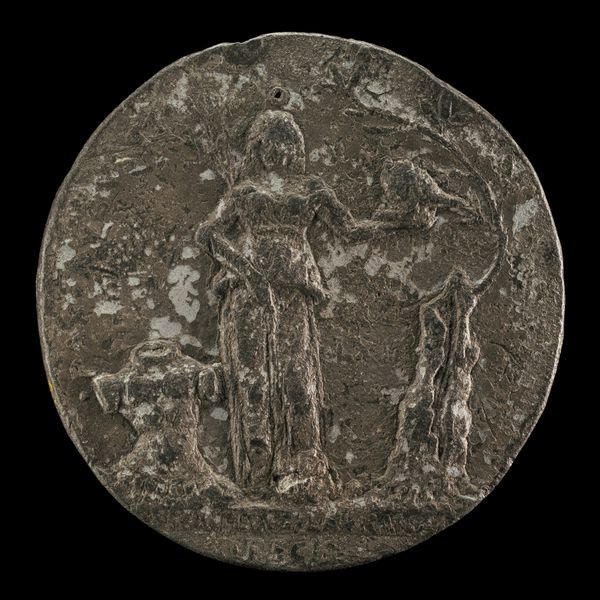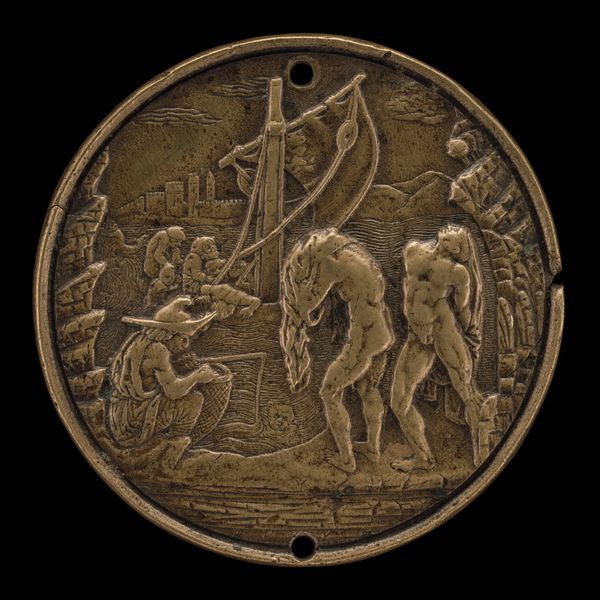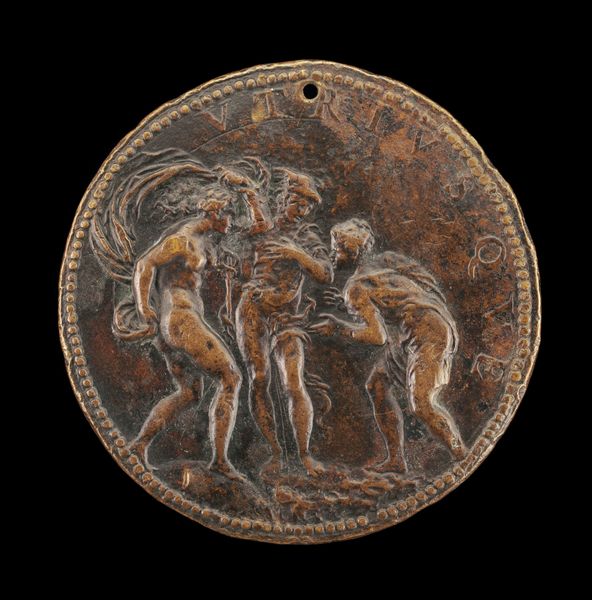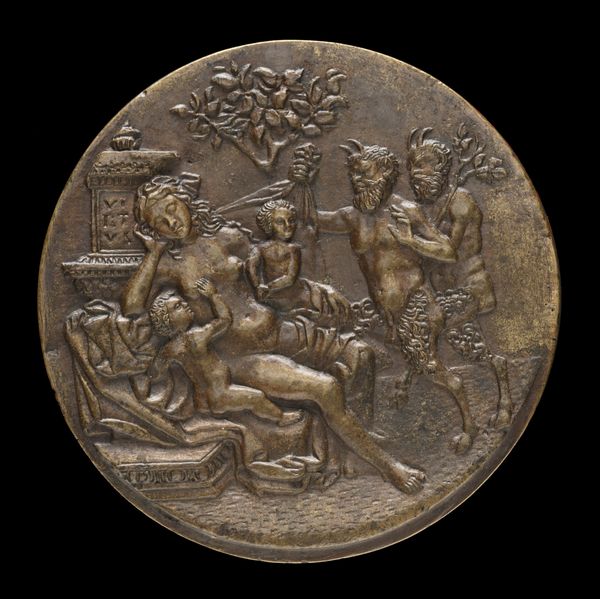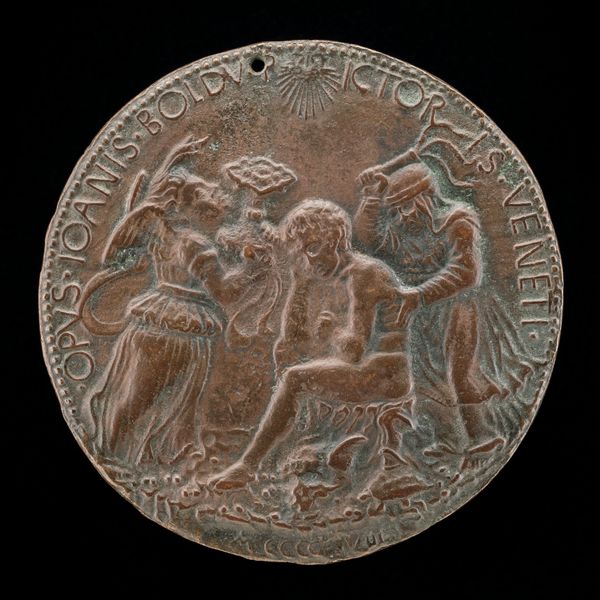
carving, relief, bronze, sculpture
#
natural stone pattern
#
dark object
#
carving
#
narrative-art
#
stone
#
sculpture
#
detailed texture
#
relief
#
bronze
#
sculptural image
#
figuration
#
unrealistic statue
#
carved into stone
#
sculpting
#
sculpture
#
history-painting
#
italian-renaissance
#
statue
Dimensions: overall (diameter): 5.26 cm (2 1/16 in.) gross weight: 43.02 gr (0.095 lb.)
Copyright: National Gallery of Art: CC0 1.0
Curator: Here we have a bronze relief sculpture from around the 15th century, titled "The Sacrifice of Iphigenia," created by Master IO.F.F. The piece has a circular composition with multiple figures in high relief. The figures are rendered in great detail, which evokes the gravity of this grim subject. What catches your eye when you examine this artwork? Editor: Well, immediately the texture stands out. The intricate details within such a small circular space are fascinating. I'm curious, focusing purely on its visual construction, what do you see in this relief? Curator: If we analyze solely the formal elements, the artist’s masterful use of line and depth to create such drama is evident. The sculptor establishes hierarchy in space through carefully controlled depth; notice the dramatic layering. How would you say the circular format impacts the telling of the narrative? Editor: I think that the circle almost makes it feel like we're peering into another world. Like we're looking at something happening that we aren't supposed to see, it feels secretive. Curator: The use of bronze is key. Bronze as material speaks to specific art historical practices, from ancient Greece to Renaissance Europe, doesn't it? Editor: It certainly does. Its enduring quality gives a sense of importance to the scene. Do you think that the size of this, being so small, speaks to who the intended viewer would have been? Curator: The artwork is undoubtedly small, so the format, along with the composition’s reliance on symbolism and classical reference, may indicate the tastes of a learned, private collector. What new perspectives on sculpture have you developed? Editor: I learned so much about examining the intrinsic form rather than my assumptions of history! It's cool to just look at the lines.
Comments
No comments
Be the first to comment and join the conversation on the ultimate creative platform.
